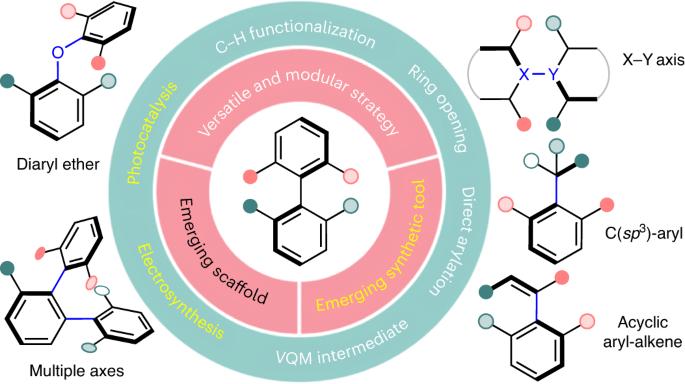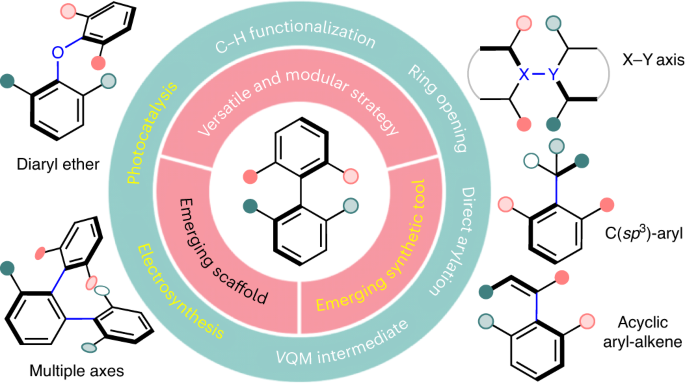Catalytic atroposelective synthesis
IF 42.8
1区 化学
Q1 CHEMISTRY, PHYSICAL
引用次数: 0
Abstract
Atropisomeric architectures are increasingly encountered in modern materials and medicinally important compounds. More importantly, they are now a characteristic of broadly useful chiral ligands and organocatalysts. Over the past decade, substantial advancements have been made in enhancing the accessibility of major classes of atropisomers through the refinement of existing strategies and the introduction of contemporary concepts for catalytic atroposelective synthesis. This synthetic capability enables the expansion of chemical space and facilitates the preparation of valuable atropisomeric scaffolds. Here we review the state of the art in the asymmetric synthesis of atropisomers with the help of selected examples. Focus will be placed on the strategies that have emerged rapidly in recent years, and that are characterized by high versatility and modularity. Additionally, the incorporation of emerging synthetic tools and representative scaffolds are discussed, alongside future directions in this research domain. Atropisomerism is an expanding target of asymmetric catalysis. In this Review, recent advances in atroposelective synthesis under catalytic control are highlighted with a focus on general strategies that provide high versatility and modularity.


催化丙选择性合成
在现代材料和具有重要药用价值的化合物中,异构体结构越来越多地出现。更重要的是,它们现在已成为具有广泛用途的手性配体和有机催化剂的特征。在过去的十年中,通过改进现有的策略和引入当代的催化异构选择性合成概念,在提高主要类别异构体的可及性方面取得了长足的进步。这种合成能力拓展了化学空间,有助于制备有价值的对位异构体支架。在此,我们将通过精选的实例回顾异构体不对称合成的最新进展。重点将放在近年来迅速崛起的策略上,这些策略的特点是通用性强、模块化程度高。此外,还讨论了新兴合成工具和代表性支架的应用,以及该研究领域的未来发展方向。
本文章由计算机程序翻译,如有差异,请以英文原文为准。
求助全文
约1分钟内获得全文
求助全文
来源期刊

Nature Catalysis
Chemical Engineering-Bioengineering
CiteScore
52.10
自引率
1.10%
发文量
140
期刊介绍:
Nature Catalysis serves as a platform for researchers across chemistry and related fields, focusing on homogeneous catalysis, heterogeneous catalysis, and biocatalysts, encompassing both fundamental and applied studies. With a particular emphasis on advancing sustainable industries and processes, the journal provides comprehensive coverage of catalysis research, appealing to scientists, engineers, and researchers in academia and industry.
Maintaining the high standards of the Nature brand, Nature Catalysis boasts a dedicated team of professional editors, rigorous peer-review processes, and swift publication times, ensuring editorial independence and quality. The journal publishes work spanning heterogeneous catalysis, homogeneous catalysis, and biocatalysis, covering areas such as catalytic synthesis, mechanisms, characterization, computational studies, nanoparticle catalysis, electrocatalysis, photocatalysis, environmental catalysis, asymmetric catalysis, and various forms of organocatalysis.
 求助内容:
求助内容: 应助结果提醒方式:
应助结果提醒方式:


